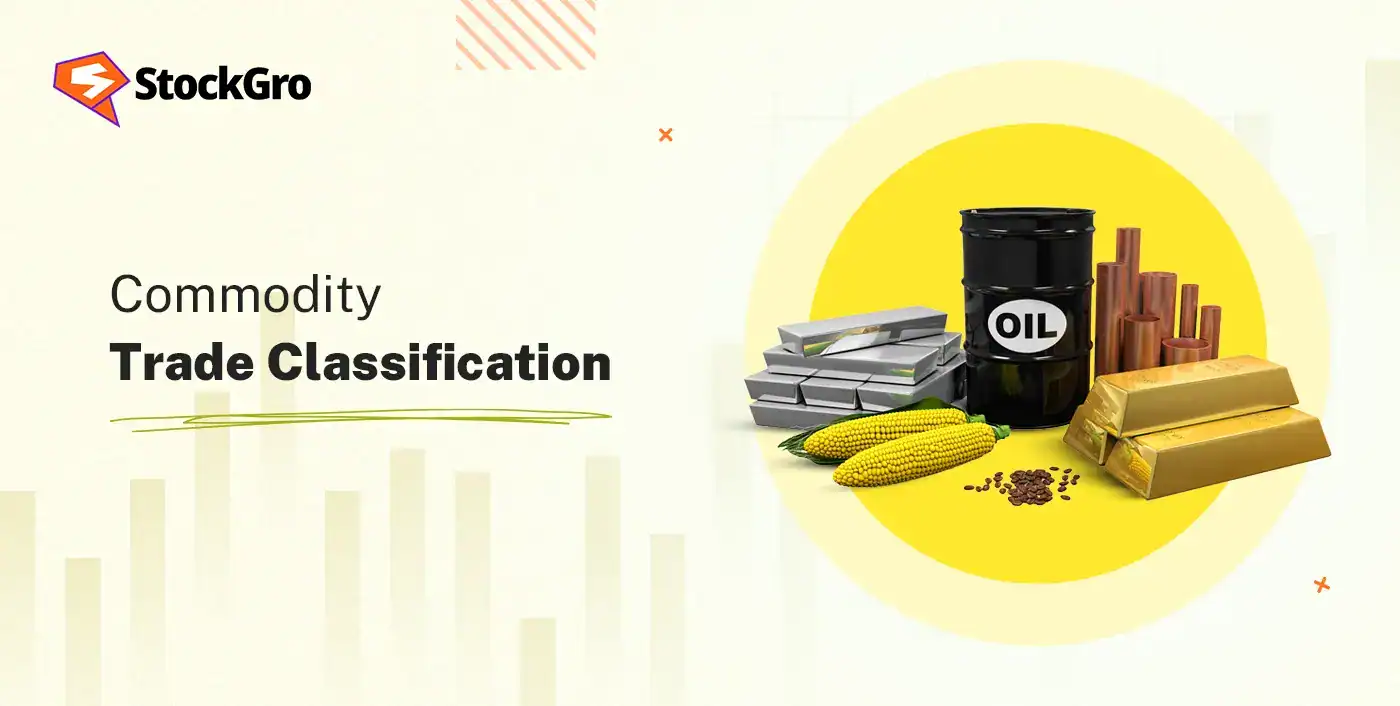
India is establishing its presence in the global commodity trading market by routing trades of gold, oil, and food through Gujarat International Finance Tec-City (GIFT City) instead of traditional hubs like Singapore or Dubai.
As India strengthens its trading game, every traded commodity needs to be correctly classified, and that’s where commodity trade classification and commodity classification systems step in. It makes trading easier for fair trade practices, applies the taxes accordingly, and keeps global trade transparent and organised.
Read this blog further to understand commodity trade classification and its regulatory aspects.
What is Commodity Trade Classification?
Before that, let’s understand what is a commodity? A commodity is a basic good or a raw material that is traded in a commodity market. It can be anything from crude oil and natural gas to oil seeds and millet wheat flour.
Now, what is a commodity market? It is the marketplace where these commodities are bought and sold, often through futures contracts or other derivatives.
Commodity trade classification is a system that classifies these commodities based on their product type, which includes agricultural commodities, energy commodities, and metal commodities.
Key Commodity Trade Classifications
The major classifications of commodities are hard and soft commodities. Hard commodities include renewable and non renewable resources or valuable commodities such as oil, gas, gold, etc., and soft commodities include agricultural yields and animal stocks.
Agricultural Commodities
Agricultural commodities are the farm products that are bought and sold in bulk. Agricultural products such as grains, oilseeds, etc., serve as raw material for food industries and are a significant component of the global market.
| Categories | Commodities |
| Cereals and pulses | Wheat, rice, maize, chickpeas |
| Oils and oil seeds | Castor oil, crude sunflower oils, mustard seeds, soybean, groundnut |
| Spices | Turmeric, chillies, cumin,and coriander |
| Plantation crops | Tea, coffee, sugarcane, and cotton |
| Other agricultural commodities | Marine products, fruits and vegetables, and dairy products |
These commodities are often influenced by demand and supply, weather conditions, currency fluctuations, and speculation.
Investors can invest in such commodities through futures contracts, ETFs such as Global X AgTech & Food Innovation ETF, Invesco DB Agriculture Fund (DBA), etc., or purchasing shares of agricultural companies.
Energy Commodities
Energy commodities are renewable and non-renewable resources such as crude oil, natural gas, biofuels, and carbon emissions credits. They are the core of the global economy.
| Renewable energy | Crude oil, natural gas, refined petroleum products, coal and uranium |
| Non-renewable energy | Electricity, solar energy, ethanol |
Energy commodities often face challenges from geopolitical events, new technology for extraction, government policies, etc. To invest in these commodities, investors may choose derivatives, exchanges such as Multi Commodity Exchange (MCX), or Over-the-Counter (OTC) markets.
Metal Commodities
Metal commodities are raw and primary metal resources such as gold, silver, copper, platinum, iron ore, etc. that are traded globally. Their prices are impacted by economic and market forces.
| Valuable metal | Gold, silver, platinum |
| Base metal | Iron ore, copper, aluminum, zinc |
They are influenced by global as well as country-wise economic health, technological advancements, and regulatory policies.
They are traded on the London Metal Exchange (LME), COMEX, New York Mercantile Exchange (NYMEX), and Multi Commodity Exchange (MCX) and investors can invest in it through purchasing ETFs, futures and options contracts, or by purchasing stocks of mining companies on these exchanges.
Other Commodity Categories
The HS (Harmonized System) and SITC (Standard International Trade Classification) are commodity classification systems, which are used for international trade, statistics, and customs.
HS & SITC Codes
Harmonized System Codes or HS Codes are a global standard numbering system for commodity trading. The number may slightly vary or add extra numbers depending on the nationality. The HS code is a 6-digit number that classifies a product following a hierarchical description of the product, as chapter, heading, and subheading.
For example, the HS code ‘040110’ is for classifying a particular form of milk, where,
- The first 2-digits, ‘04’, represent the code for milk,
- 4-digits, ‘0401’, represents, unprocessed, that is, the heading,
- And ‘10’ or ‘040110’ represents the subheading, fat content, not exceeding 1% by weight.
Standard International Trade Classification Codes, or SITC Codes, are classification systems for trading commodities which are developed by the United Nations. The SITC code is for standardising and reporting international trade statistics. These are categorised into sections based on products and start from 0 and go up to 9.
Code structure is like, 0 represents food and live animals, 1 is beverages and tobacco, 2 is for crude materials, and so on.
For example,the SITC code ‘333’ is petroleum oils, oils from bituminous materials, crude, ‘551’ is for essential oils, perfume & flavour materials, and ‘651’ is for textile yarn.
Regulatory Aspects of Commodity Classification
In India, the regulatory aspects of commodity classification are regulated by the following regulatory bodies:
- Securities and Exchange Board of India (SEBI): SEBI is the main regulator for the commodity derivatives market. SEBI regulates commodity futures and options trading on exchanges like MCX and the National Commodity & Derivatives Exchange (NCDEX).
- Central Government: The central government imposes policies based on which commodities are traded on various exchanges.
- State Governments: The state government controls and regulates the spot markets for commodities, especially for agricultural products.
- Ministry of Consumer Affairs, Food and Public Distribution: It manages the Essential Commodities Act 1955, which gives the government authority to control the production, supply, and distribution of essential commodities.
- Directorate General of Foreign Trade (DGFT): It issues trade policies for the import and export of commodities.
Conclusion
Understanding the classification of commodities gives investors and businesses a clear view of how commodities move in a market. It also ensures the right pricing, taxation, and smooth trade on the global level.
Commodities classification systems like HS and SITC codes help to maintain transparency and consistency in trading data. As India expands its global commodity trading, correct classification supports organised and efficient international trade practices
FAQ‘s
Commodities are classified based on product type and also through systems such as HS and SITC codes. These systems group commodities into agricultural, energy, and metal commodities, which helps in smooth trades and maintaining statistical data.
The HS Codes are a global standard numbering system for trading commodities. And the SITC Codes are used for reporting and standardising international trade data for different product categories.
Commodity classification is important because it makes global trade transparent and organised, and also helps in applying the right tax rates, maintaining data, and supporting fair trade practices around the world.
Commodity classification affects trade tariffs depending on how commodities are classified under HS and SITC codes, which the customs officials use to determine the tax rates.
The challenges involved in commodity trade classification are: frequent updates in classification systems, similar product types, and varying national codes, which make it difficult to maintain accuracy in a global context.
Businesses shall refer to the official customs databases, follow the trade authority guidelines, and stay updated with changes in the HS and SITC codes for accurate classification of commodities.

